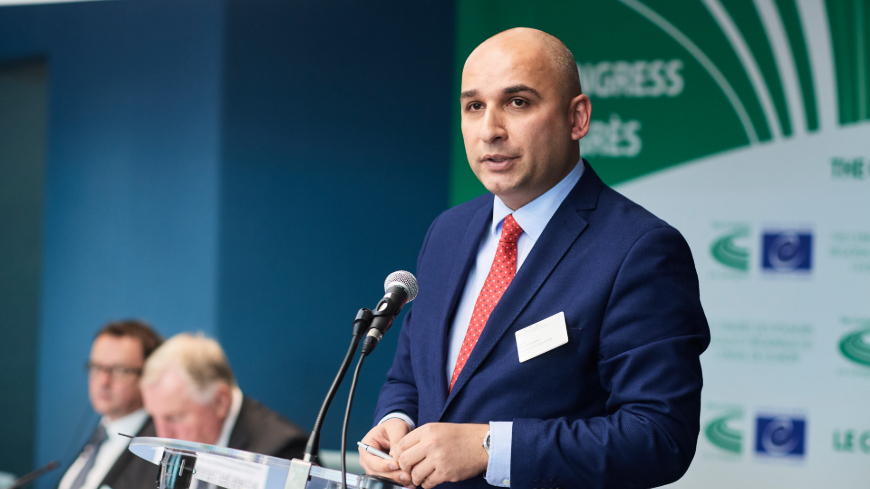The European Cultural Routes, which were established in 1987 on the initiative of the Council of Europe, now criss-cross over 50 countries. They involve journeys through space and time and highlight Europeans’ shared values and heritage, while showcasing the regions concerned. Local and regional elected representatives therefore have many reasons to promote this way of discovering Europe, miles away from mass tourism, as shown by the debate on the subject held in the Chamber of Regions on 30 October.
Introducing the discussions, Karl-Heinz Lambertz (Belgium, SOC) pointed out that culture was central to regional identities and that it was local and regional authorities which maintained and promoted cultural heritage. Levan Kharatishvili, Deputy Minister for Education, Science, Culture and Sport of Georgia and Vice-Chair of the Governing Board of the Enlarged Partial Agreement on Cultural Routes of the Council of Europe, which manages and oversees them, talked enthusiastically about the history and operation of the routes, the first of which, in 1987, followed in the footsteps of the Santiago de Compostela pilgrims. He said 38 cultural routes now brought together over 50 countries throughout Europe, as well as a number in North Africa and the Middle East.
As co-operation networks based on historical heritage, the routes had to include at least three countries and meet a large number of quality criteria in order to be certified. They often went beyond architectural heritage alone and also incorporated the intangible heritage, such as gastronomic and craft traditions.
A novel form of tourism based on sustainable development
Alongside their value in terms of the rediscovery of Europeans’ shared history, the cultural routes were an innovative form of tourism based on sustainable development: by inviting their visitors to take an interest in sometimes little-known towns and regions, they offered an alternative to the excessive tourist numbers at the most famous sites; moreover, 90% of the cultural routes crossed rural areas and accordingly helped to promote them. Levan Kharatishvili concluded by saying that the routes, which were innovative and crossed the whole of Europe, were continuing to expand and had a great future.
Rudolf Godesar, head of cross-border cultural co-operation of the German-speaking Community in Belgium and Chair of the Cross-border Culture Taskforce of the Association of European Border Regions (AEBR), then presented some specific features of cross-border co-operation in the cultural field. He said that there were often more cultural exchanges in border regions than elsewhere, in particular because the residents of those regions “discover and take up their neighbours’ cultures”. While the cultural sector was a dynamic source of employment and growth, the AEBR regretted the fact that the mobility of artists and performers, who were key players in this “culture without borders”, was still hindered by many legal, financial and fiscal obstacles. In Mr Godesar’s view, international organisations, in particular the Council of Europe, could offer their expertise to facilitate the procedures demanded of artists and performers wishing to work outside their own countries.
Cultural routes foster exchanges throughout Europe
The debate following the presentations showed in a very concrete way the extent to which the cultural routes fostered and facilitated exchanges and travel: given the forthcoming launch of the Peter the Great route, Alexander Drozdenko (Russian Federation, EPP/CCE) was pleased to note that Russia had decided to simplify the visa process for tourists wanting to visit the province of Kaliningrad, which was crossed by the route.
Svitlana Bohatyrchuk Kryvko (Ukraine, CRE/ ECR) stressed the role of culture in combating prejudice and welcomed the fact that five cultural routes now linked Ukraine to western Europe. Tamar Taliashvili (Georgia, SOC) announced that Georgian local authorities and the Ministry of Culture had recently signed an agreement to develop new cultural routes involving Georgia so as to raise its profile throughout Europe.
Lastly, Barbara Toce (Italy, SOC), of the Chamber of Local Authorities, announced the preparation of a report on “culture without borders”, which would address cultural routes and the rediscovery of local heritage in Europe.
** 37th Session of the Congress **
File 37th Session - Agenda - Videos and photos – Mediabox interviews




